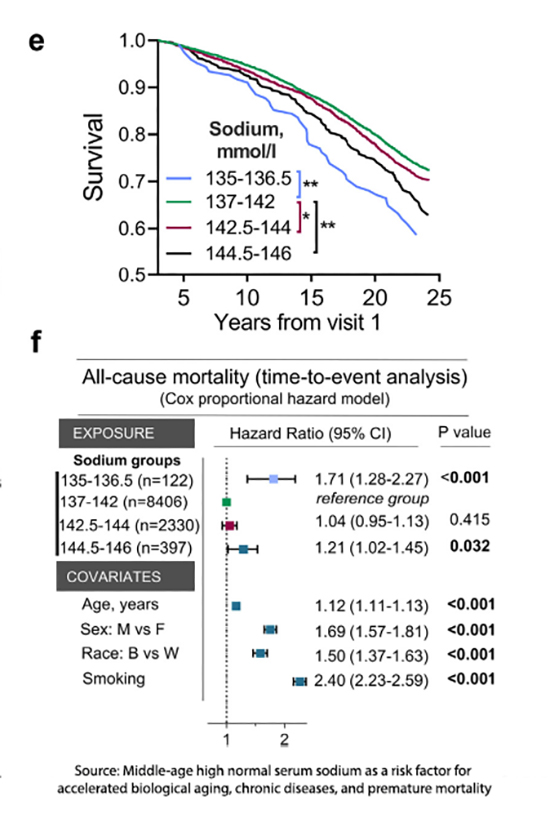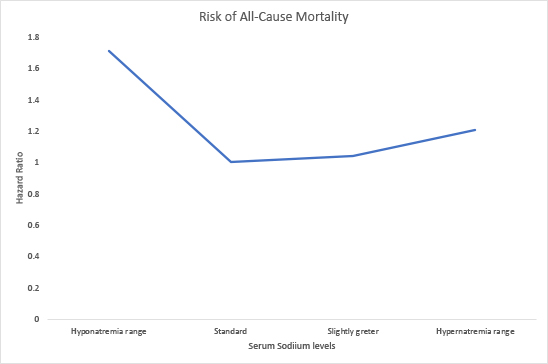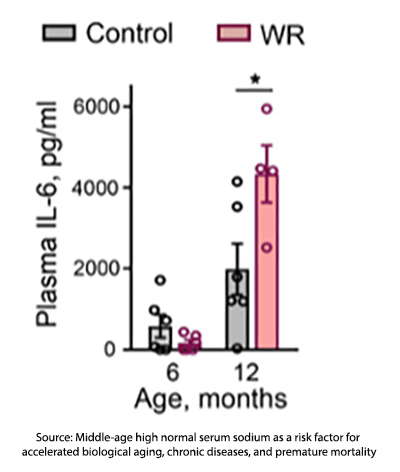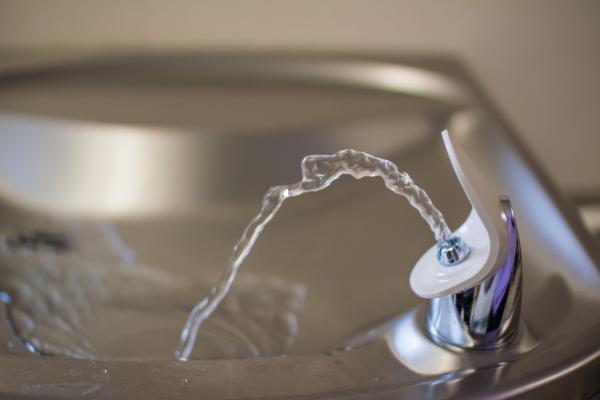The study, which so captured media attention, begins with a call to continue the work of Ponce de Leon in finding the Fountain of Youth.
“A new research field of geroscience [sic] aims to develop safe, practical, and widely available interventions targeting aging: a common driver of chronic diseases.”
So, it is fitting that in this modern day search for the Fountain of Youth the researcher sought optimal hydration.
The Current Study
The current work is part of a long series of studies by the author mining data from the Atherosclerosis Risk in Communities (ARIC) database – an ongoing, longitudinal survey of individuals from 4 US communities. Participants have been seen five times over roughly 30 years. The goal of this study was “to find out whether higher serum sodium at middle age is associated with accelerated aging and to identify serum sodium thresholds that can be used in clinical practice to identify people at risk who can potentially benefit from improved hydration.”
"We used serum sodium, that increases when we drink less fluids, as a proxy for the hydration habits of study participants."
The degree of hydration has never been measured in the ARIC participants; we have no idea how much water they did or did not drink. There are good reasons to use serum sodium as its proxy – sodium exerts the most significant force of the circulatory elements on our water volume. It is critical in triggering thirst and other mechanisms we use to increase or decrease our water intake. Elevated blood glucose can also alter that response, but individuals with diabetes were excluded from entry into the study.
There are also reasons that sodium may be a poor measure of hydration. Our physiology maintains serum sodium within a range that is “stable within 2–3 mmol/l interval between visits 1 and 2, 3 years apart,” but we have no data to correlate a specific degree of hydration with a point along the serum sodium range. In a different study looking at hydration in participants in the NHANES longitudinal study, total water consumption among participants, from water, beverages, and the water within food, varied from 1687 ml to 4981. They, too, found that underhydration was associated with increased mortality but that the chosen beverage made a difference, in some instances decreasing the risk of cancer while simultaneously increasing the risk of heart disease.
Two of the variables that were followed also come with uncertainty. The endpoints were age-related chronic disease and all-cause mortality. But ARIC looks only at cardiovascular risk and disease, arguably the problems most impacted by our circulatory system; the effect of serum sodium on cancer is unanswered. The other factor they considered was biological age, a mathematical construct based on 9 to 15 biomarkers [2]
 The research demonstrated that there was accelerated aging and increased morbidity and mortality for individuals at the upper range of expected serum sodium. The headlines left out two critical points: first, the number of individuals at risk. For the group most discussed, those with the higher than acceptable serum sodium, it is 3.5% of the population. Far more interesting is the graph showing all-cause mortality. The most significant mortality was experienced by those at the lowest end of the normal serum sodium spectrum – a 71% increased risk for the overhydrated, compared to the much-discussed 21% risk for the underhydrated.
The research demonstrated that there was accelerated aging and increased morbidity and mortality for individuals at the upper range of expected serum sodium. The headlines left out two critical points: first, the number of individuals at risk. For the group most discussed, those with the higher than acceptable serum sodium, it is 3.5% of the population. Far more interesting is the graph showing all-cause mortality. The most significant mortality was experienced by those at the lowest end of the normal serum sodium spectrum – a 71% increased risk for the overhydrated, compared to the much-discussed 21% risk for the underhydrated.
I replotted those hazard ratios against all-cause mortality, and the resulting visualization is a version of the Nike Swish. As with many biological values, there is a Goldilocks value, in this instance, in the peak of the range of average serum sodium values. Too little or too much results in an increased risk of premature death. So while the headlines spoke to the familiar narrative of insufficient hydration, the data show that too much hydration may be far worse.
insufficient hydration, the data show that too much hydration may be far worse.
The researchers presented no specific hydration guidelines. Here is what they wrote:
“Although the general importance of adequate hydration is generally recognized …long-term clinical studies, are lacking. … It is also recognized that establishing recommendations for water requirements that meet the needs of all persons is impossible because individual fluid needs differ because of variations of factors that influence water loss and solute balance, such as activity, nutrition, environment, and disease.”
- Natalia I. Dmitrieva, corresponding author
The study is fascinating. Unfortunately, most of us will go away with the idea that if we just drink more fluids, we will live longer, something the researchers never prove or suggest. But before throwing out the baby with the bathwater, consider this early statement from the study’s introduction:
"In the current study, we test the hypothesis that optimal hydration may slow down the aging process. … This hypothesis was inspired by previous mouse studies in which lifelong water restriction, increasing serum sodium by 5 mmol/l, shortened the mouse lifespan by 6 months which corresponds to about 15 years of human life.”
In some ways, their intention is far more revealing than this current data mining. Let’s look at their motivation, beginning with a caveat. The normal range of serum sodium for mice differs from humans and within breeds. But the rise in serum sodium associated with water deprivation would correlate well with the high sodium levels in the ARIC study
Mice were chronically deprived of water by providing a meal consisting of 30% water and 70% dry food without any other water source. Biochemical markers indicated that despite sodium values within normal ranges, their physiological mechanism compensated for a “chronic state of mild dehydration.” There were no apparent changes between these water-restricted (WR) mice and the controls that received the same amount of food but had no restrictions on their water intake over the first year. In the second year, the WR mice suddenly lost weight and experienced a shortening of their life by approximately 18% compared to controls.
There were other changes for those WR mice:
- Body composition changed in year two as they lost body fat and weight
- They ate more food throughout the study than controls. This may be partly trying to relieve their thirst; after all, that was the only water source. But normally hydrated mice reduce their eating when faced with diminished available water.
- Metabolically they resembled their cousins, the “desert hopping mouse Notomys alexis,” a creature adapted to an environment with little water. The desert mice and the water-restricted mice both increased their food consumption. The reason; they could metabolically unlock water from their food. “WR mice remodeled metabolism toward metabolic water formation that allowed them to respond efficiently to a water deficit and stay in water balance. … to achieve such efficiency the WR mice had to increase energy expenditure … This reaction is a risk factor for accelerated aging ….and could contribute to a decreased life span” [2]. This increased energy expenditure also explains the fat loss in their later year, as it was utilized for calories.
 The WR mice were not more hypertensive or exhibiting glucose intolerance than controls, both risk factors in human aging
The WR mice were not more hypertensive or exhibiting glucose intolerance than controls, both risk factors in human aging- The WR mice did have elevations of coagulation factors, indicating the presence of a low-grade thrombotic state.
- An inflammatory marker, IL-6, was normal during the first year of life, but during the second, as aging usually increases inflammation, both the WR and control mice saw increased levels. The WR levels were markedly higher, suggesting accelerated inflammation.
While it was not reported in the current study, ARIC participants demonstrated low-grade inflammation and a prothrombotic state, as was seen in the WR mice. Previous work had shown that sodium levels at the high end of the normal range were associated with hypertension and elevated cholesterol.
As a physician, I find this nuance to our physiology fascinating. The normal range of sodium is a statistical construct, and where those at the ends of the spectrum become “abnormal” is now a bit fuzzier from this research. The research “identified a clear threshold of 141.5 mmol/L for serum sodium concentration above which the risk of the development of chronic age-related diseases greatly increases.” But as to the media’s interpretation that we need only drink more fluids, the last word goes to the researchers from their inspirational mouse study:
“Existence of individualized osmotic “set-points” …could create challenges for serum sodium and osmolality decrease by simple modifications of water and salt intake for people whose higher sodium levels are the result of their higher osmotic “set-point” as opposed to habitual low water and high salt intakes.”
[1] Those factors included “cardiovascular (systolic blood pressure), renal (eGFR, cystatin-C, urea nitrogen, creatinine, uric acid), respiratory (FEV), metabolic (glucose, cholesterol, HbA1c, glycated albumin, fructosamine), immune/inflammatory (CRP, albumin, beta 2-microglobulin).”
[2] The basis for this last statement that energy expenditure is a risk factor for accelerated aging comes from a hypothesis called the Redox theory of aging. You can find a more extended exposition of that belief here.
Source: Middle-age high normal serum sodium as a risk factor for accelerated biological aging, chronic diseases, and premature mortality eBioMedicine DOI: 10.1016/j.ebiom.2022.104404
Suboptimal hydration remodels metabolism, promotes degenerative diseases, and shortens life Journal of Clinical Investigation Insight DOI: /doi.org/10.1172/jci. insight.130949.




